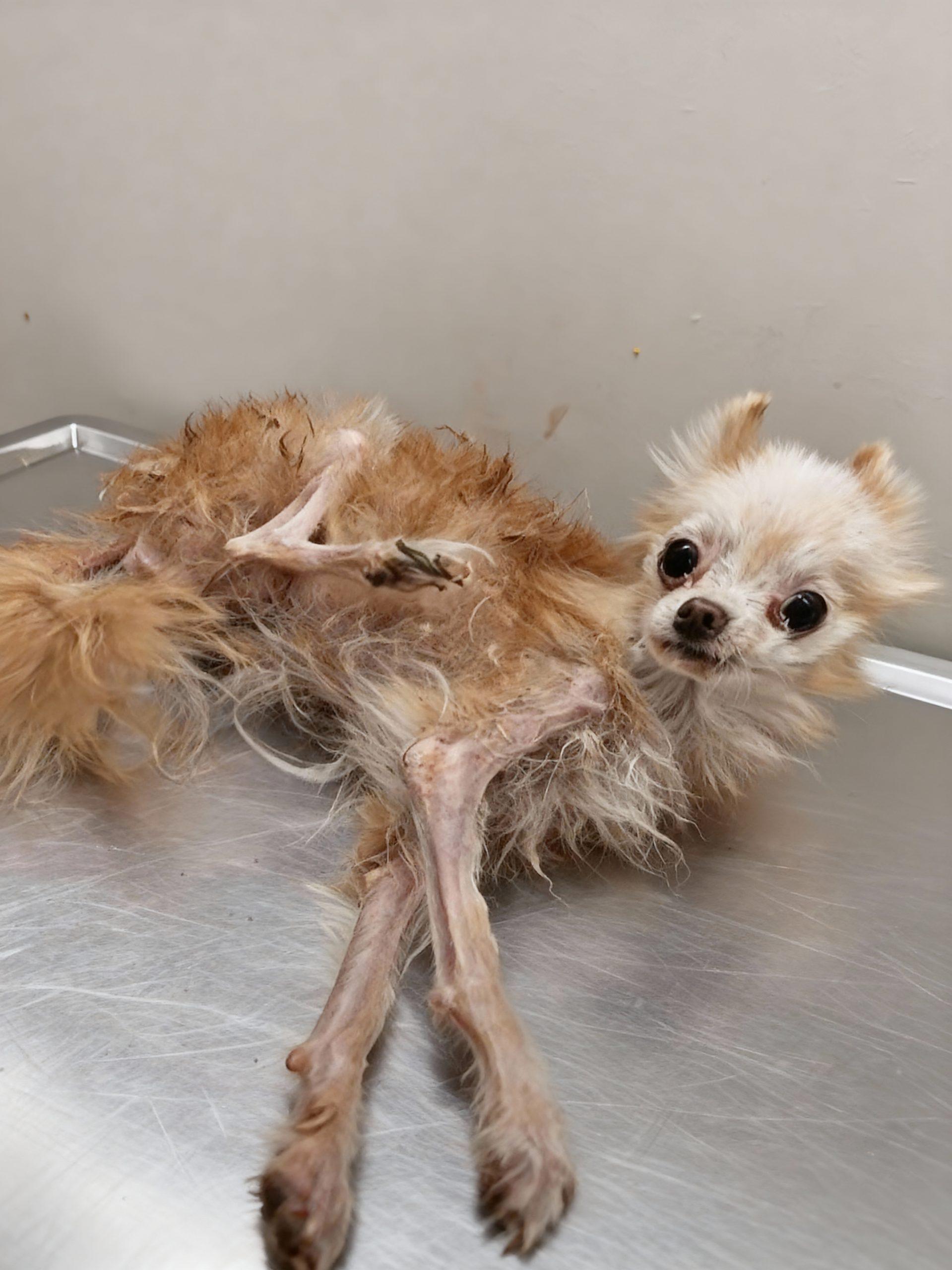The image before you is a stark and undeniable testament to a profound tragedy: animal neglect. It captures a tiny, fragile being, a chihuahua, whose emaciated body and matted fur speak volumes about prolonged suffering and a desperate need for intervention. This isn’t merely a picture; it’s a plea, a silent cry from an innocent creature enduring unimaginable hardship. The widespread issue of animal neglect, often hidden from plain sight, represents a significant challenge for animal welfare organizations and a moral imperative for society as a whole. While the visual evidence can be deeply unsettling, it serves as a crucial catalyst for understanding the multifaceted nature of neglect, the devastating impact it has on animals, and the critical steps we can take, both individually and collectively, to provide rescue, rehabilitation, and ultimately, a second chance at life. This article will delve into the various forms of animal neglect, highlight the signs to look for, discuss the pathways to recovery for these vulnerable animals, and emphasize the vital role each of us plays in preventing such suffering and fostering a more compassionate world for all creatures.

Animal neglect manifests in numerous ways, not always as dramatically as the image portrays. It can be active, such as intentional starvation or physical abuse, but often it is passive, stemming from ignorance, indifference, or an owner’s inability to provide adequate care due to financial hardship, mental health issues, or an overwhelming number of animals (hoarding). Common forms of neglect include a lack of proper nutrition, resulting in emaciation; inadequate shelter from the elements; untreated medical conditions; severe infestations of fleas, ticks, or other parasites; and a complete absence of grooming, leading to painful matting of fur and skin infections. Emotional neglect, though less visible, is equally damaging, depriving animals of social interaction, mental stimulation, and the affection crucial for their well-being. Recognizing these varied forms is the first step towards intervention.

The physical signs of neglect are often quite evident, as seen in the initial image. Emaciation, where bones are visibly protruding, is a classic indicator. Other red flags include a dull, matted, or patchy coat; overgrown nails that make walking difficult; visible sores, wounds, or skin infections; a persistent cough or discharge from the eyes and nose; and lethargy or extreme fearfulness. Behavioral cues can also signal neglect: an animal that is excessively shy, aggressive, or withdrawn, or one that constantly seeks food, might be suffering. It is important to note that sometimes these signs can be subtle, and a careful observation of the animal’s overall condition and environment is crucial. If something feels amiss, it often is.

If you suspect an animal is being neglected, the most important action is to report it to the appropriate authorities. This usually means contacting your local animal control, humane society, or SPCA. These organizations have trained professionals who can investigate the situation safely and legally. It is crucial to provide as much detail as possible, including the exact location, descriptions of the animal(s) and their condition, and any observed neglectful behaviors. While it can be tempting to intervene directly, this can sometimes put you or the animal at risk and may hinder official intervention. Trusting the experts ensures the best possible outcome for the suffering animal.
Once an animal is rescued from a neglectful situation, the journey to recovery begins. This process is often intensive and requires a dedicated team of veterinarians, animal behaviorists, and compassionate caregivers. The first priority is always medical stabilization: addressing dehydration, malnutrition, parasites, and any immediate life-threatening conditions. For severely emaciated animals like the chihuahua pictured, refeeding must be done carefully to prevent refeeding syndrome, a potentially fatal complication. Grooming is also critical, as severely matted fur can restrict movement, cause skin infections, and harbor parasites.

Medical treatment, however, is only one part of the healing process. Many neglected animals also suffer from profound psychological trauma. They may be fearful of humans, other animals, or unfamiliar environments. Behavior rehabilitation, often involving positive reinforcement and gentle socialization, is crucial to help these animals learn to trust again and adapt to a normal, loving home environment. This can be a long and challenging process, requiring patience, understanding, and specialized expertise. Foster homes play an invaluable role here, offering a quiet, stable environment for emotional healing before adoption.

Beyond direct intervention, education is a powerful tool in combating animal neglect. Many instances of neglect arise not from malice but from a lack of knowledge regarding proper animal care. Public awareness campaigns can inform potential pet owners about the responsibilities involved in pet ownership, including nutrition, veterinary care, grooming, and training. Promoting spaying and neutering programs is also vital in controlling pet overpopulation, which often contributes to neglectful situations where owners are overwhelmed. When animals are viewed as valued family members rather than disposable commodities, neglect becomes less prevalent.






